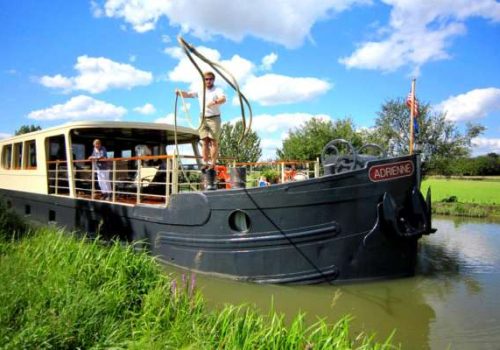Living and Working in Italy
Information & guidance about seasonal jobs in Italy
Pasta, pizza, ice cream, museums, galleries, culture galore and high fashion… working in Italy will open your eyes to the incredible experiences that you won’t be able to stop raving about! You’ll leave Italy with a heart full of love for the expressive locals, a stomach full of incredible food and a head full of unique memories, having made a positive impact on the country you will no doubt have full in love with!
With a population of over 60 million, Italy boasts the highest population in Europe. As a result, urban areas are relatively densely populated, particularly around major cities like Milan, Naples, and Rome.
Italy is renowned for its rich culture and history, exquisite cuisine, the fiery temperament of its people, and a profound appreciation for the finer things in life—la dolce vita. Many beautiful (designer) products trace their origins to Italy. Consider the Italian automotive industry, for example.
Beyond its cultural treasures, Italy offers breathtaking natural landscapes and a diverse array of cities and regions. In summary, living and working in Italy is a marvelous experience. On this page, you will discover more information about the ins and outs of settling in and working in Italy.
Seasonal jobs in Italy
We don’t have any jobs matching this search. Below you’ll find a selection of our most popular vacancies!
- Chef & Cookery, Tourism
- France
- Hotel jobs, Tourism
- Cyprus, Greece, Spain
Work in Italy
Working Conditions in Italy
In the south of Italy, a typical workday usually begins around 9:00 in the morning. Italians generally take a long lunch break from around 13:00 until about 16:00. Lunch holds significant importance in Italy, and it’s an event where considerable attention is given. Often, Italians prefer to dine out, choosing cafeterias or bars for their meals. After lunch, work continues until around 20:00. In the north of Italy, working hours are more akin to those in the Netherlands and Belgium.
Salaries in Italy
Salaries in Italy can vary significantly depending on various factors, including the region, industry, and job position. When people from abroad come to work in Italy, it’s essential to have a clear understanding of the salary landscape to ensure they are compensated fairly and can maintain a comfortable standard of living.
In Italy, salaries are often perceived as lower than in some other Western European countries, such as Germany or the United Kingdom. This is partly due to the country’s economic challenges and a slower rate of wage growth. However, the cost of living can also be lower in many Italian cities compared to other major European metropolises. The cost of housing, for example, can be significantly more affordable in smaller towns or rural areas compared to the major cities like Milan or Rome.
Salaries in Italy are typically negotiated based on the industry and the specific job role. Professionals in sectors like finance, technology, and engineering tend to earn higher salaries compared to those in hospitality or the arts. It’s essential for expats to research industry-specific salary expectations and cost of living in their intended destination to make informed decisions regarding their employment offers. Moreover, the Italian labor market is known for its strong labor unions, which can influence wage negotiations and worker rights, so understanding local labor laws is crucial when seeking employment in Italy.
It’s also worth noting that Italy has a relatively high tax burden, which can impact the net income individuals take home. Social security contributions, income tax, and other deductions can significantly reduce your gross salary. However, these contributions also provide access to Italy’s healthcare system and other social benefits.
In conclusion, salaries for people coming to work abroad in Italy can be influenced by various factors, including industry, location, and local labor market conditions. While salaries may be lower than in some other European countries, the cost of living can be more reasonable in many areas of Italy, and the cultural and lifestyle benefits of living in this beautiful country can often compensate for the differences in earnings. It’s essential for expatriates to research and understand the specific conditions in their chosen field and location to make informed financial decisions when relocating to Italy.
Income Tax in Italy
Italy, much like the Netherlands, employs a progressive tax system, which means the more you earn, the higher the tax rate you pay. Here is more information about the income tax brackets in Italy:
- Tax rate for incomes between €0 and €15,000: 23%
- Tax rate for incomes between €15,000 and €28,000: 27%
- Tax rate for incomes between €28,000 and €55,000: 38%
- Tax rate for incomes between €55,000 and €75,000: 41%
- Tax rate for incomes of €75,000 and above: 43%
Holidays in Italy
When working in Italy, it’s useful to know the days when you will have time off. You can mark the following dates in your calendar:
- January 1: New Year’s Day
- January 6: Epiphany
- March/April: Easter
- April 25: Liberation Day
- May 1: Labor Day
- June 2: Republic Day
- August 15: Assumption of Mary
- November 1: All Saints’ Day
- December 8: Feast of the Immaculate Conception
- December 25: Christmas Day
- December 26: St. Stephen’s Day
- December 31: New Year’s Eve
Work Culture in Italy
Italian companies often follow a hierarchical organizational structure. Decisions are usually made solely by the company’s boss, and offering your own opinion is not typically encouraged. Italians tend to maintain a formal demeanor, using titles (e.g., dottore) when addressing someone. As you’ve read above, Italians enjoy socializing, and they like to discuss work-related matters during long lunches or dinners. Every milestone is celebrated, and Italians highly value building relationships with business partners and colleagues.
Working in the Italian Hospitality Sector
Many individuals opt to work in Italy during their gap year. Despite having one of the highest unemployment rates in Europe, certain regions in Italy have a high demand for foreign workers, particularly during the winter and summer seasons. Italian companies frequently seek (temporary) employees who speak various European languages, including German, Dutch, English, and French. During the summer season, Italy attracts numerous tourists, leading to a need for additional assistance in restaurants, campgrounds, and hotels.
Numerous hospitality positions are available, such as receptionist, waitress, bartender, chef, kitchen assistant, fitness instructor, and animator. Feel free to check out our job vacancies page for an overview of open hospitality positions in Italy.
Working at a Campsite in Italy
Working at a campsite in Italy is another option. Camp enthusiasts from around the world particularly enjoy Italian lakes like Lake Garda and Lake Maggiore. Several Dutch companies operate campgrounds in Italy, including Vacansoleil and TUI Netherlands. Keep an eye on these websites and our job vacancies page if you’re looking for a campsite job in Italy.
Voluntary work in Italy
A city with one of the richest heritages in the world, Rome serves as the center point for the faithful around the world, and the start place of a multitude of historical tales that are woven into the fabric of endless cultures. Voluntary work in Italy’s capital means spending time in the city that starred in the great upheavals of Western art, taking in the sights of ancient icons such as the Colosseum, and Pantheon as you recall the city’s golden age as the capital of the world.
Another great destination for voluntary work in Italy is the city of canals; Venice is made up of over 100 small islands, with no streets! Gondola rides will transport you to your volunteering destinations as you sip on your infamous Italian morning coffee. Defy convention in the city of inspiration that has been setting trends for years past, and make a positive impact whilst you enjoy and indulge.
Travel down to volunteer in Italy’s southern gem – Naples is the perfect destination for volunteers with a love for history. Wandering Naples underground or absorbing information at the National Archaeological Museum takes you deep into the city of relics, as you come home armed with a wealth of knowledge about the city you have helped to improve.
Volunteering projects in Italy
Voluntary work in Italy means a wealth of options that help you explore your passions as well as the country that is admired worldwide. Teaching English is a popular way of volunteering in Italy, as you pass along your linguistic skills to adults and children alike and open doors for their future.
Archaeology is a great way for history buffs to gain some hands on voluntary work in Italy, that will not only be fun, but also look great on your CV. Explore the tombs of the past and unearth relics from times long past, whilst exploring one of the most historically rich cities the world has to offer.
If you are more interested in volunteering with the living, marine conservation means volunteering in Italy’s beautiful oceans to assist marine researchers in recording information about the incredible creatures you will find. Armed with this information, you will be able to help develop and implement projects to protect the fragile ecosystem. The picturesque streets, pretty piazzas and indulgent food and coffee will make for a volunteering experience you won’t forget.

Living in Italy
Benefits of Living and Working in Italy
Permanently residing in Italy – a dream that many Italy enthusiasts share. Plenty of sunshine, delightful pasta, magnificent medieval squares, stunning landscapes, and the sea never too far away; the list goes on and on. All these aspects would make you seriously consider a move to Italy. However, Italy offers more than just good food, drinks, and beautiful architecture. The Italian economy ranks fifth globally, and Italians are among the happiest people on Earth. Living and working in Italy equates to daily enjoyment.
Moreover, the daily cost of living is comparable to that in the Netherlands or UK, and in some aspects, Italy is even slightly cheaper. Dining out is also more affordable in Italy, though this may depend on the location.
The “macho culture” is something to be aware of when living and working in Italy. Status holds significant importance in Italian society!
Accommodation in Italy
Housing and rental prices in Italy vary significantly depending on the region or city. The central part of Italy, such as Tuscany, is highly sought after, which drives up housing prices. Finding accommodation in cities like Rome and Milan can be challenging. However, if you’re looking for a house in the countryside, prices are approximately 30 to 70% lower than in major cities.
Costs The average monthly rent for a one-bedroom apartment in the heart of Rome is €1,016. A similar apartment outside the city costs around €691 per month. Rental prices in Milan are slightly higher.
Here are some website tips for finding accommodation in Italy:
Living in Rome
Many individuals looking to live and work in Italy choose Rome, the beautiful capital of Italy. One significant reason is the wonderful, warm weather. The average temperature throughout the year is 20.3 degrees, and in July and August, the average temperature is just under 30 degrees! However, Rome is a bustling city. It’s not only a tourist destination but is also home to approximately 2.6 million people.
Rome boasts numerous attractions. The Colosseum is undoubtedly one of the city’s highlights, and this amphitheater has even been included in the list of the Seven New Wonders of the World. Other attractions in Rome include the Trevi Fountain and St. Peter’s Basilica.
Moreover, Rome is a significant city for the Italian job market. Finding employment in Italy is much easier in one of the major Italian cities like Rome.
Transportation in Italy
Italy boasts a fairly comprehensive and efficient public transportation network, particularly in major Italian cities, where buses, trains, and metros are well connected.
Most major Italian cities have a metro system, with trains and buses servicing the entire country. Additionally, there are various ferries that transport you from the mainland to the Italian islands.
The metro is the easiest and quickest way to navigate Italian cities. However, the metro is not available everywhere. In some major cities like Rome, Milan, Naples, Turin, Catania, Brescia, and Genoa, you can use the metro, but in others like Florence or Bari, there is no metro, and you can travel by bus or tram.
How Toll Roads Work in Italy
Most highways in Italy are toll roads. Therefore, it’s useful to know how this works in Italy before your move. Of course, you can choose to avoid toll roads and set your navigation accordingly, but this often results in longer travel times.
You can pay tolls in Italy in several ways. You can pay in cash at all manned toll booths. Alternatively, you can pay with your debit card or credit card by selecting the toll booth labeled “Carte.” Most times, you can also pay with a Dutch bank card, but this is not always the case. Therefore, it’s advisable to bring a credit card.
You can also opt to purchase a toll badge and pay electronically. You can buy this badge from the ANWB before your departure.
If you are already in Italy and forgot to purchase a toll badge, you can use the Viacard. You can purchase it at service stations along the road and tobacco shops. You can buy the Viacard for €25, €50, or €75. With the Viacard, you can use special payment gates, where the queues are often shorter.
Parking in Italy
Parking in Italy works differently than in the Netherlands. You’ll notice that parking spaces are often limited, and the parking spots are quite narrow. The white parking spaces are free, but sometimes you need to use a parking disc. Yellow parking spaces are reserved for disabled individuals, and you must have a disabled parking permit to park there. If you see two hammers on a parking sign, it only applies on weekdays. A parking sign with a cross on it is only valid on holidays.
For more information about parking rules in Italy, you can refer to this page.
Eating in Italy
When it comes to food and drink in Italy, there is no end to our enthusiasm. Let’s be honest; that’s what the country is truly famous for.
Almost every Italian village has its bar where you can order coffee, beer, wine, soft drinks, and liquor. Most bars are open from early morning until late at night. On display in the showcase or on the counter, you’ll find various types of cornetti (croissants) and other dolci (often eaten as breakfast in Italy) or pieces of focaccia. You can also get panini (sandwiches) or toast.
And in Italy, you naturally eat… pizza! In the city and tourist areas, you usually pay a bit more for a genuine Italian pizza. Sometimes, pizzerias also offer simple pasta dishes, but the menu typically revolves around pizza.
Italian dining habits are similar to those in many other Southern European countries, with dinner often enjoyed later in the evening. People frequently seek out a cozy terrace or bar. Many dishes are available, including sandwiches, salads, pasta, and pizza. Well-known dishes include Bruschetta, ravioli, lasagna, and spaghetti. Often, appetizers are also ordered.
Italians often order wine with ice and a slice of orange for dessert. Olives or nuts are typically served as well.
Tipping in Italy
While tipping in Italy is not customary, it is greatly appreciated. In a restaurant, you can leave a few euros or up to 10% of the bill as a tip, for instance. The easiest way is to leave some cash on your table because waiters often struggle to accept tips via card payments.

Going Out in Italy
Italians love fun outings and parties. They frequently visit theaters; smaller theaters in Rome are particularly noteworthy. For instance, the Teatro dell’Opera di Roma, located in the historical center, offers ballet, dance, and opera performances.
Another notable theater is Teatro Argentina, one of the city’s oldest theaters, accommodating 400 spectators. During the summer months, Rome hosts numerous outdoor theater productions, with popular shows at locations such as the Thermen van Caracalla.
Vibrant cities like Rome, Naples, and Pisa are filled with theaters, discotheques, and bars, ensuring lively nightlife.
Italy’s Landscape and Nature
Italy predominantly features a mountainous terrain, with peaks reaching over 700 meters high. The highest area is the Monte Rosa massif on the Italian-Swiss border in the north. The peak of Dufourspitze stands impressively at 4634 meters.
In the north of Italy, the landscape is dominated by the Alps, consisting mainly of hard rocks like granite and slate. In the eastern part of the Alps lies the Dolomites, where a much softer rock, magnesium limestone, prevails. The highest point in the Dolomites is Marmolada, reaching 3342 meters.
Italian Islands
Italy is home to major islands like Sicily and Sardinia. Sicily, roughly the size of Belgium, is accompanied by smaller islands such as Elba, the volcanic Lipari Islands (including the Stromboli volcano), Ischia, Procida, and Capri.
Climate in Italy
Italy officially experiences three distinct climates. Most of the country enjoys a Mediterranean climate with mild winters and warm summers. Some regions may experience light precipitation during winter.
In northern Italy, a temperate maritime climate prevails, with consistent rainfall throughout the year and relatively mild summers and winters.
The Alps feature a high mountain climate, where both summers and winters can be extremely cold. This region generally receives higher precipitation compared to the rest of the country.
Customs and Traditions in Italy
Italy boasts numerous customs and traditions, of which Italians are incredibly proud. Making a good first impression is crucial, and Italians always greet each other warmly. Buongiorno translates to good day and is a formal greeting used, for instance, when entering a restaurant or shop. Ciao, meaning hello, is an informal greeting used among acquaintances. The phrase Molto piacere, signifying pleased to meet you, is used when someone introduces themselves.
When invited to an Italian’s home for a meal, it is greatly appreciated if you bring a gift for the host or hostess. Consider items like chocolates or a lovely bouquet. However, be mindful not to include chrysanthemums in the bouquet, as Italians associate them with cemeteries and funerals.

What Not to Miss in Italy
Venice
The historic center of Venice is undoubtedly one of the most iconic city centers in the world. The distinctive gondolas gliding through its canals are quintessentially Venetian.
This city is situated within a lagoon, resulting in the absence of traditional streets within the city. Instead, people navigate through its canals and on foot along winding pathways. Venice is a magnificent labyrinth where you’ll encounter various attractions along the way. The highlight is the nearly 100-meter-high observation tower, which offers a breathtaking view of the city.
Rome and Vatican City
Naturally, the magnificent city of Rome must be on your list. The Italian capital has been one of Europe’s most significant cities for centuries. Thanks to the Roman Empire’s golden era, you’ll find an abundance of historical landmarks to explore, such as the Colosseum, the Pantheon, and the Palatine Hill. Rome is also home to Vatican City, the world’s smallest independent state, nestled within Rome, serving as the heart of the Roman Catholic Church.
The Colosseum
The Colosseum, also known as one of the modern wonders of the world, is an amphitheater in Rome constructed in the first century AD on the orders of the Flavian emperors. This architectural marvel is often referred to as the Flavian Amphitheater, and its tiered seating structure is what makes it so impressive. Despite enduring natural disasters and considerable damage, the Colosseum remains an awe-inspiring structure drawing tourists daily.
Florence
Florence is another city that should not be missed. The multitude of splendid buildings, museums, and other attractions within this Tuscan city would inspire many writers to include Florence in their stories. For tourists, Florence truly has everything for a memorable city break: impressive museums like the Uffizi, picturesque squares like the Piazza della Signoria, and, of course, the fantastic Italian cuisine.
Lake Garda
Italy boasts several lakes, nearly all of which are worth mentioning. Lake Garda, the largest of them all, is a haven for nature lovers. Its stunning surroundings, crystal-clear waters, and charming lakeside villages make it a popular destination for visitors seeking relaxation and water activities.






